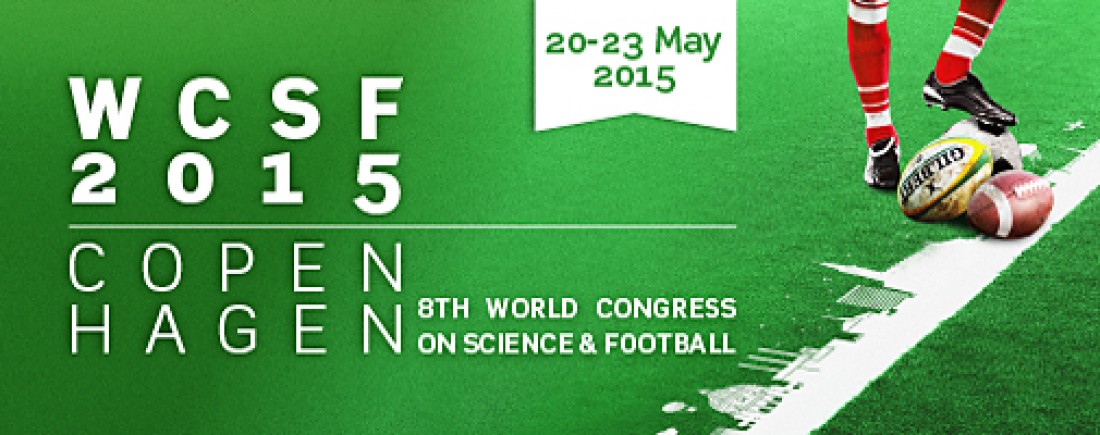I recently made the decision to go back to school, and as part of my coursework I enrolled in an Advanced Exercise Physiology class. One of our assignments for the class asked us to identify 2 prominent scientists in our preferred area of study, and to discuss their contributions to this area of study as well as to the field of exercise physiology as a whole.
Of course, I have only ever had one preferred area of study in the field of exercise physiology, the study of the science of soccer. In this particular area, the logical choices as the most prominent sports scientists were Jens Bangsbo and Peter Krustrup. Together, they have authored hundreds of scientific studies done on soccer players and teams, as well as several books.
Both Jens Bangsbo and Peter Krustrup have been huge sources of inspiration to me in my career. I was thrilled to receive news earlier this year that the abstract from my latest research project involving high speed harnessed treadmill running had been accepted for an oral presentation at the 8th World Congress on Science and Football, happening in May of this year and being held at the University of Copenhagen (the school at which both Jens Bangsbo and Peter Krustrup are professors of exercise physiology). I thought it would be fitting for me to post my school assignment, which focuses on and summarizes what I believe to be one of their most important contributions to science and soccer: the creation of the Yo-Yo Tests. Here it is below. I’d love to hear your thoughts about this topic. Drop me a line here to get the conversation started.
The physiology of soccer is a subject that has always been of great interest to me. I grew up playing the sport and now earn a living as a soccer-specific strength and conditioning coach, so I have always felt the need to learn as much as I can about the science – and specifically the physiology – involved in the sport. Over the course of my ten-year career working in soccer, I have discovered that there are several prominent sports scientists conducting research on individual players and teams at all different levels of the sport. Among them, two people stand out as being the most prolific and having done some of the most meaningful and influential research in this field: Dr. Jens Bangsbo, PhD., and Dr. Peter Krustrup, PhD. Both of these sports scientists have conducted research at and continue to work as professors at the University of Copenhagen in Copenhagen, Denmark. This paper will briefly summarize some of the main research done by both doctors, and how this research has contributed to the study of exercise physiology related to the sport of soccer.
Jens Bangsbo has published hundreds of scientific studies on soccer, and also authored several books. Peter Krustrup has worked with Jens Bangsbo on a number of scientific studies, and also published many studies on his own. For the purposes of this paper, I will be summarizing the research that Dr.’s Bangsbo and Krustrup have done together. Among their most notable work includes the development and subsequent researching of soccer-specific versions of the Leger-Boucher test (commonly called the “beep test”), the Yo-Yo Tests, used as a means of assessing soccer players’ aerobic and anaerobic capacity. Three different versions, or “levels” of the Yo-Yo Tests were developed by Dr.’s Bangsbo, Krustrup, and their colleagues at the University of Copenhagen: The Yo-Yo Endurance Test, the Yo-Yo Intermittent Endurance Test, and the Yo-Yo Intermittent Recovery Test. Dr.’s Bangsbo, Krustrup and their colleagues have conducted numerous studies that have examined the effectiveness, validity, reliability, and reproducibility of all three levels of the Yo-Yo Tests (Bangsbo et. al., 2008, Bangsbo et. al., 2006, Krustrup et. al., 2003, Krustrup et. al., 2006).
The Yo-Yo Tests developed and validated by Jens Bangsbo and Peter Krustrup are an extremely valuable addition to the field of exercise physiology as it relates to the sport of soccer. The tests have been shown to be valid and reliable predictors of performance in soccer at various levels, including youth soccer, female soccer, adult amateur soccer, and adult professional / national team soccer. They have become the most commonly used tests to determine the aerobic and anaerobic capacities of high level soccer players (professional and national team) in the world (Buccheit & Rabbani, 2014). Furthermore, because of this extensive use of the Yo-Yo tests in soccer, countless other studies have been conducted using the tests, including some which have examined the physiological responses to the test in soccer players. One recent study done by Hammouda et. al. (2013) reported significant increases in physiological markers of muscle damage (including creatine kinase, myosin ATPase, and lactate dehydrogenase), in young soccer players immediately following completion of the Yo-Yo Intermittent Recovery Test Level 1. Studies such as this one serve to highlight the importance that the contributions that Dr.’s Bangsbo and Krustrup have made, as they demonstrate other scientists’ interest in studying all aspects of the tests which they created.
I have personally used the Yo-Yo Tests for over eight years now, during my work as Fitness Coach with the Ontario Provincial Soccer Teams, Canadian National Women’s U17 Team, the Toronto FC Academy Teams, as well as thousands of athletes training with my company, Soccer Fitness Inc. During all of my years using the tests, I have always found them to be very useful in determining the physical fitness of the players I worked with, and also especially useful in assessing the effectiveness of the training interventions I used. Myself and a lot of other fitness coaches working with soccer players around the world owe a debt of gratitude to Jens Bangsbo and Peter Krustrup for their contributions to the science and physiology of soccer in general, and the development of the Yo-Yo tests in particular.


Leave A Comment